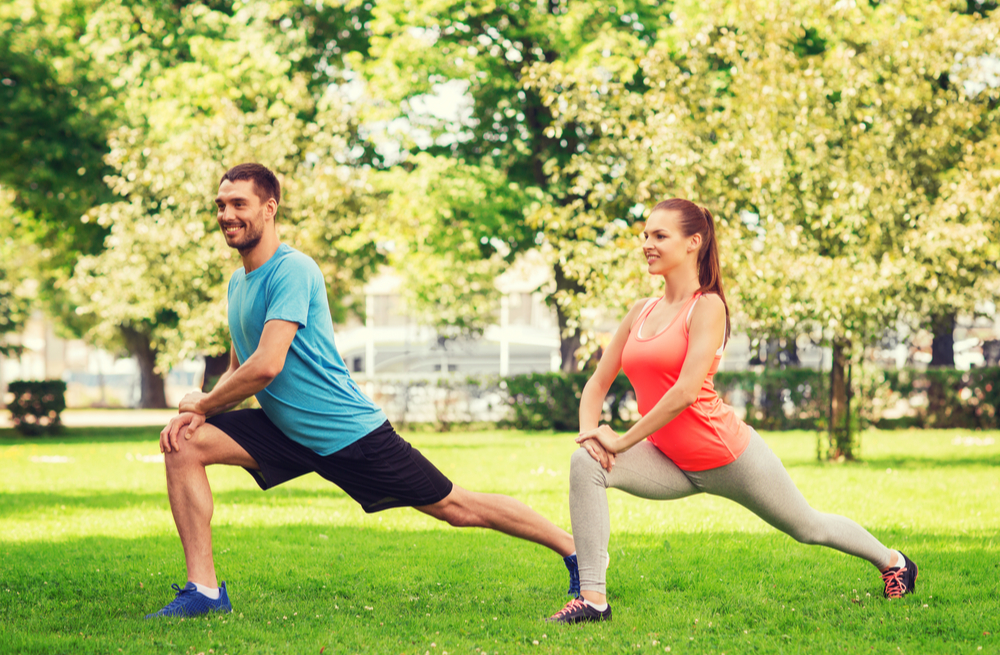Have you been told your hip flexors are too tight? Or have you ever thought that your back pain was due to sitting too much? Do you stretch and stretch but progress is slow to come, if at all? It has been said that the hip flexors contribute to over 90% of low back pain cases and are perhaps the single most effective muscle to stretch.
However, sometimes stretching a tight area is not always the answer. Sometimes, we need to be able to differentiate between a mobility restriction (tight muscle), strength limitation (weak muscle), or a motor control dysfunction (poor coordination). We’ll cover that in a bit, but first some anatomy will be helpful.
Why tight hip flexors may be contributing to your low back pain.
Remember, there are many causes of low back tightness and pain. Many of which can be varied and complex. If you are experiencing low back pain, please consult a chiropractor for evaluation and potential treatment options. This article is meant to outline one possible cause of back pain but always keep in mind that there are many other causes that this article may not address, some of which may be other serious health conditions.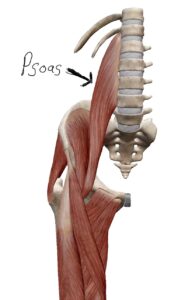
“The hip flexors” is a term used to group together several muscles found on the anterior of the hip that create flexion at the joint. There are two main muscles we will concern ourselves with today: the psoas and the rectus femoris. The psoas muscle connects the low back directly to the hip. This hip flexor muscle starts attached to not only every bone in the low back, but to the discs as well. Then, the fibers of this muscle cross the pelvis and are joined by fibers from another hip flexor called the iliacus to become the iliopsoas. The combined tendon then attaches on to a big bump on the femur, the biggest leg bone. There are some minor anatomical variants, but this one is the most common.
Because of its unique position of not only being able to flex the hip but also its ability to flex the spine, the psoas becomes involved in many low back pain cases. Low back injuries involving lifting, bending, or prolonged sitting most often have a root cause of psoas spasm or chronic tightness.
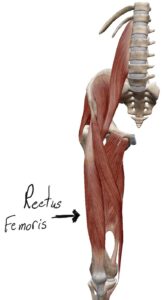
The rectus femoris is a hip flexor, but it’s also part of the quadriceps group. It attaches to a bump on the bone just above the hip socket and then runs down the thigh and joins the patellar tendon. It is frequently associated not only with low back pain cases but also with anterior knee pain, or patellar tendonitis.
These muscles become chronically tight and fibrotic with patients who adopt behaviors of repetitive flexion of the hip or flexion of the spine. Patients who sit for several hours of the day, sleep in the fetal position, or drive for many hours at a time are creating flexion of the hip. Likewise, people who stand with a slight bend over a counter, work in the garden, perform manual labor, repeatedly pick up small children, or perform sit-ups during their workout are creating flexion of the spine. These activities help to contribute to hip flexor tightness and low back pain.
How to reduce hip flexor tightness.
In general, most of us know how to stretch our hips. Stretching is great and can provide some short-term relief, but we should always follow stretching up with some kind of resistance exercise or a control drill to help make the changes last a little longer. This routine combines both stretching and motor control retraining to maximize your efforts in lengthening the hip flexors and retraining their antagonist muscles.
When to use this routine:
- Pre-workout
- After a long car ride
- After sitting for an hour or two
- As part of a morning stretching routine
Stretching:
The Lunge Stretch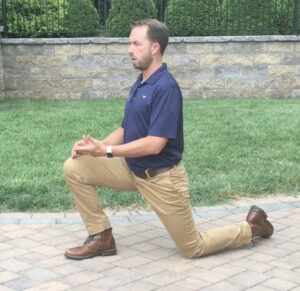
This stretch is a staple in most fitness circles for good reason. It’s called the lunge stretch. This stretch requires minimal to no equipment other than a floor. This stretch targets both the muscles we discussed earlier – the iliopsoas and the rectus femoris. Watch this video for a full explanation of the lunge stretch!
Cobra Stretches
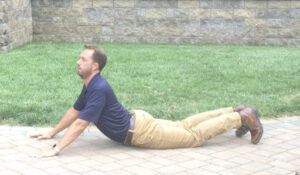 When laying prone on the floor start by slightly pushing the shoulders up off of the floor while keeping your hips on the surface. Hold the body up with the spine in extension for a count of 3 to 8 seconds, repeat 15 times. Advance this exercise as the hip flexors relax by pushing the shoulders farther away from the floor until the arms are fully extended and the hips are still resting on the floor.
When laying prone on the floor start by slightly pushing the shoulders up off of the floor while keeping your hips on the surface. Hold the body up with the spine in extension for a count of 3 to 8 seconds, repeat 15 times. Advance this exercise as the hip flexors relax by pushing the shoulders farther away from the floor until the arms are fully extended and the hips are still resting on the floor.
Similarly, this exercise can be done while standing by placing your hands on the back of the pelvis and leaning backwards. Repeat this backbend 15 times, holding each bend for up to three seconds. Here is the video.
Motor control:
Lunge variations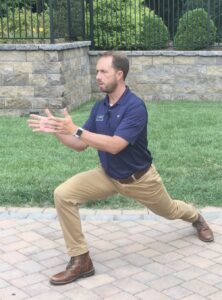
There are many different variations on the lunge. Yoga has the right idea with the various warrior poses but I would advise some great caution with downward dog stretches. When we stretch out, we need to figure out how to control the new range of motion. With the hip flexors, lunge variations can be a great way to take the hip through a large and controlled ROM. In this video I demonstrate my favorite lunge variation, the clock lunge.
Strength:
Psoas marching
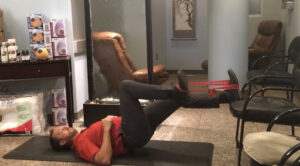 This one is so much harder than it looks. Use a light resistance band (or maybe no band at all) to start with and build up from there. Make sure your core is braced while you pull your knee to your chest actively. The core activation is key, so pay close attention to that part! You can find the video here.
This one is so much harder than it looks. Use a light resistance band (or maybe no band at all) to start with and build up from there. Make sure your core is braced while you pull your knee to your chest actively. The core activation is key, so pay close attention to that part! You can find the video here.
Active Release Treatment:
For those that continue to struggle with hip flexor tightness and chronic low back pain, Active Release Treatment can be a powerful tool to unlock these muscles. ART is a patented soft-tissue treatment that is well known in the athletic injury world and is a powerful tool for those dealing with repetitive injuries. It works by using a hand contact to produce tension on the muscle and moving the muscle through its natural range of motion. This helps to reduce the cross fiber scar tissue that is formed with injury and sedentary posture, quickly restoring range of motion and decreasing joint compression and pain. This video demonstrates what an ART treatment looks like.
Hip flexor tightness can contribute to low back pain and stiffness. When we stretch out any part of our body, it is important to also do some motor control and strength drills as well. Try the exercises outlined above to relieve some of your pain and as always, feel free to email or call us with any questions.
Kick start your stretching! 10% off CBD cream now through September 3.

Daryl C. Rich, D.C., C.S.C.S.

